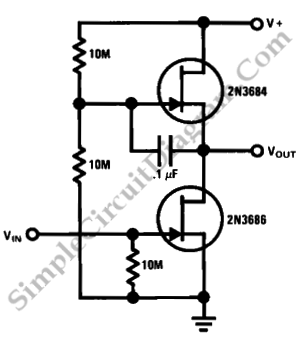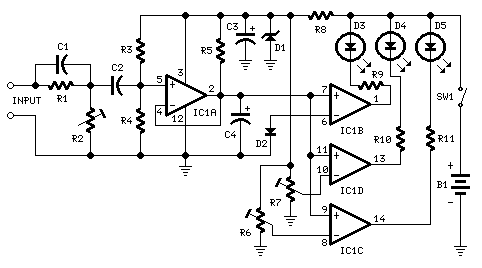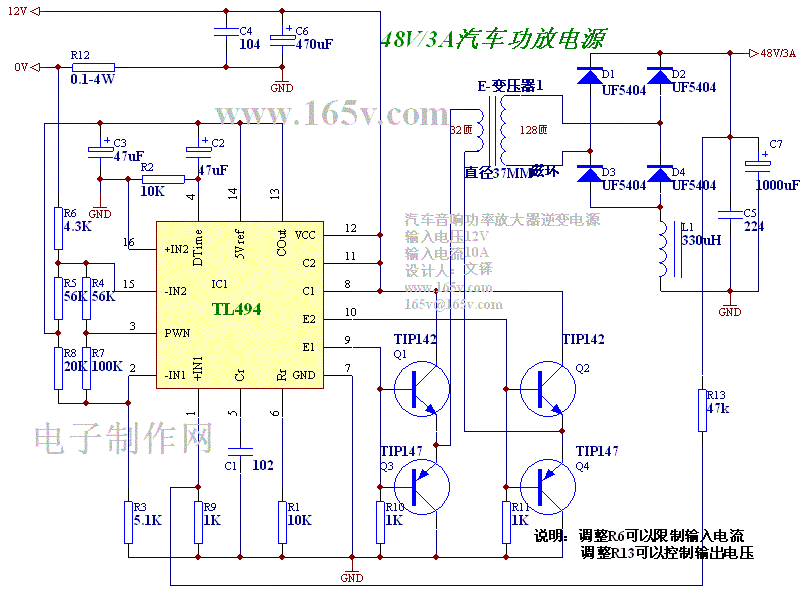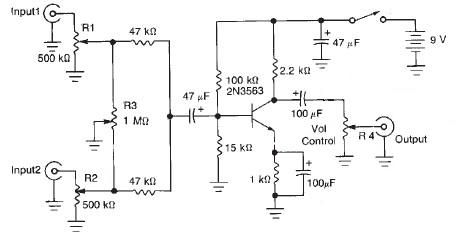
Audio Thermostat LM56 ProjectCircuit
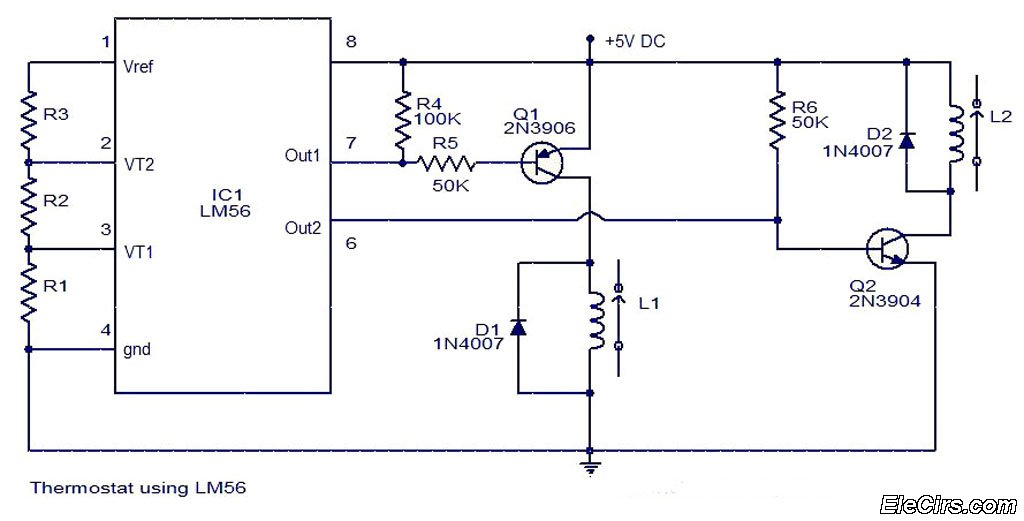
The LM56 Thermostat Project Circuit Diagram includes a schematic for the LM56 thermostat. The values of resistors R1, R2, and R3, which determine the required trip points VT1 and VT2, can be calculated using the following equations: VT1 = 1.250V x (R1) / (R1 + R2 + R3) and VT2 = 1.2...
The LM56 thermostat circuit utilizes the LM56 integrated circuit, which is designed for temperature control applications. The circuit typically includes a temperature sensor, the LM56 IC, and a set of resistors (R1, R2, R3) that form a voltage divider network. This configuration allows the circuit to monitor the temperature and activate or deactivate a connected load based on predefined temperature thresholds.
In this schematic, the two trip points, VT1 and VT2, are critical for setting the operational limits of the thermostat. The trip point VT1 is set to activate the output when the temperature exceeds a certain threshold, while VT2 serves as a lower limit for deactivation. The equations provided for VT1 and VT2 illustrate how the resistor values influence these thresholds. Adjusting R1, R2, and R3 will therefore modify the voltage levels at which the thermostat responds to temperature changes.
The LM56 features built-in hysteresis, which prevents rapid cycling of the output when the temperature hovers around the set points. This is essential for maintaining stable operation and preventing wear on connected devices. The output can be configured to drive a relay or directly control heating or cooling systems, providing a versatile solution for various temperature regulation needs.
Overall, the LM56 thermostat circuit is a robust design suitable for applications in climate control systems, industrial automation, and other environments where precise temperature management is crucial. Proper selection of the resistor values and understanding of the voltage divider principle are key to optimizing the performance of this thermostat circuit.Thermostat LM56 Project Circuit Diagram LM56 Thermostat Project Circuit Diagram values of R1, R2 and R3 for the required trip points VT1 and VT2 can be determined using the subsequent equations. VT1 = 1.250V x (R1)/ (R1 + R2 + R3) VT2 = 1.2.. 🔗 External reference
The LM56 thermostat circuit utilizes the LM56 integrated circuit, which is designed for temperature control applications. The circuit typically includes a temperature sensor, the LM56 IC, and a set of resistors (R1, R2, R3) that form a voltage divider network. This configuration allows the circuit to monitor the temperature and activate or deactivate a connected load based on predefined temperature thresholds.
In this schematic, the two trip points, VT1 and VT2, are critical for setting the operational limits of the thermostat. The trip point VT1 is set to activate the output when the temperature exceeds a certain threshold, while VT2 serves as a lower limit for deactivation. The equations provided for VT1 and VT2 illustrate how the resistor values influence these thresholds. Adjusting R1, R2, and R3 will therefore modify the voltage levels at which the thermostat responds to temperature changes.
The LM56 features built-in hysteresis, which prevents rapid cycling of the output when the temperature hovers around the set points. This is essential for maintaining stable operation and preventing wear on connected devices. The output can be configured to drive a relay or directly control heating or cooling systems, providing a versatile solution for various temperature regulation needs.
Overall, the LM56 thermostat circuit is a robust design suitable for applications in climate control systems, industrial automation, and other environments where precise temperature management is crucial. Proper selection of the resistor values and understanding of the voltage divider principle are key to optimizing the performance of this thermostat circuit.Thermostat LM56 Project Circuit Diagram LM56 Thermostat Project Circuit Diagram values of R1, R2 and R3 for the required trip points VT1 and VT2 can be determined using the subsequent equations. VT1 = 1.250V x (R1)/ (R1 + R2 + R3) VT2 = 1.2.. 🔗 External reference
